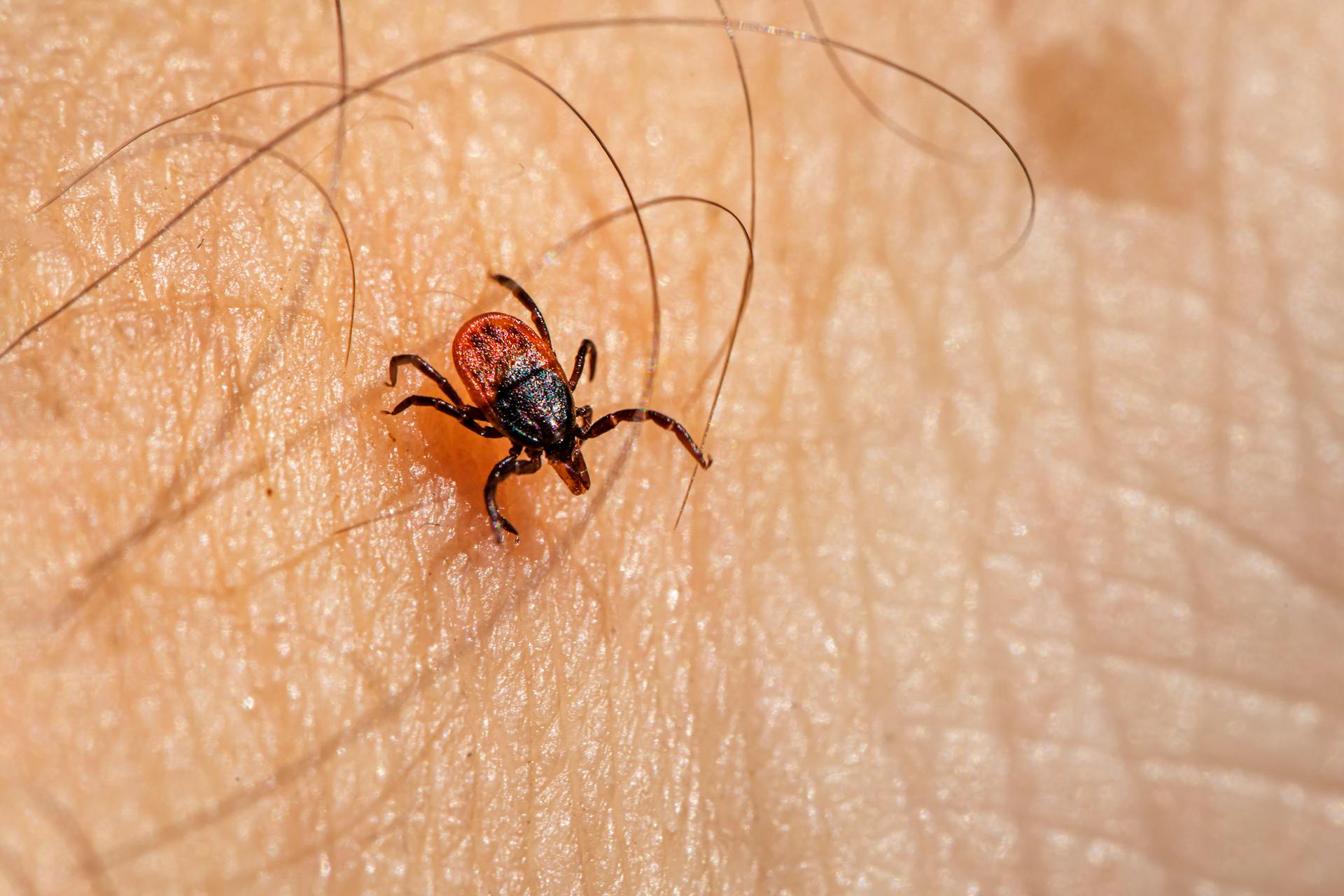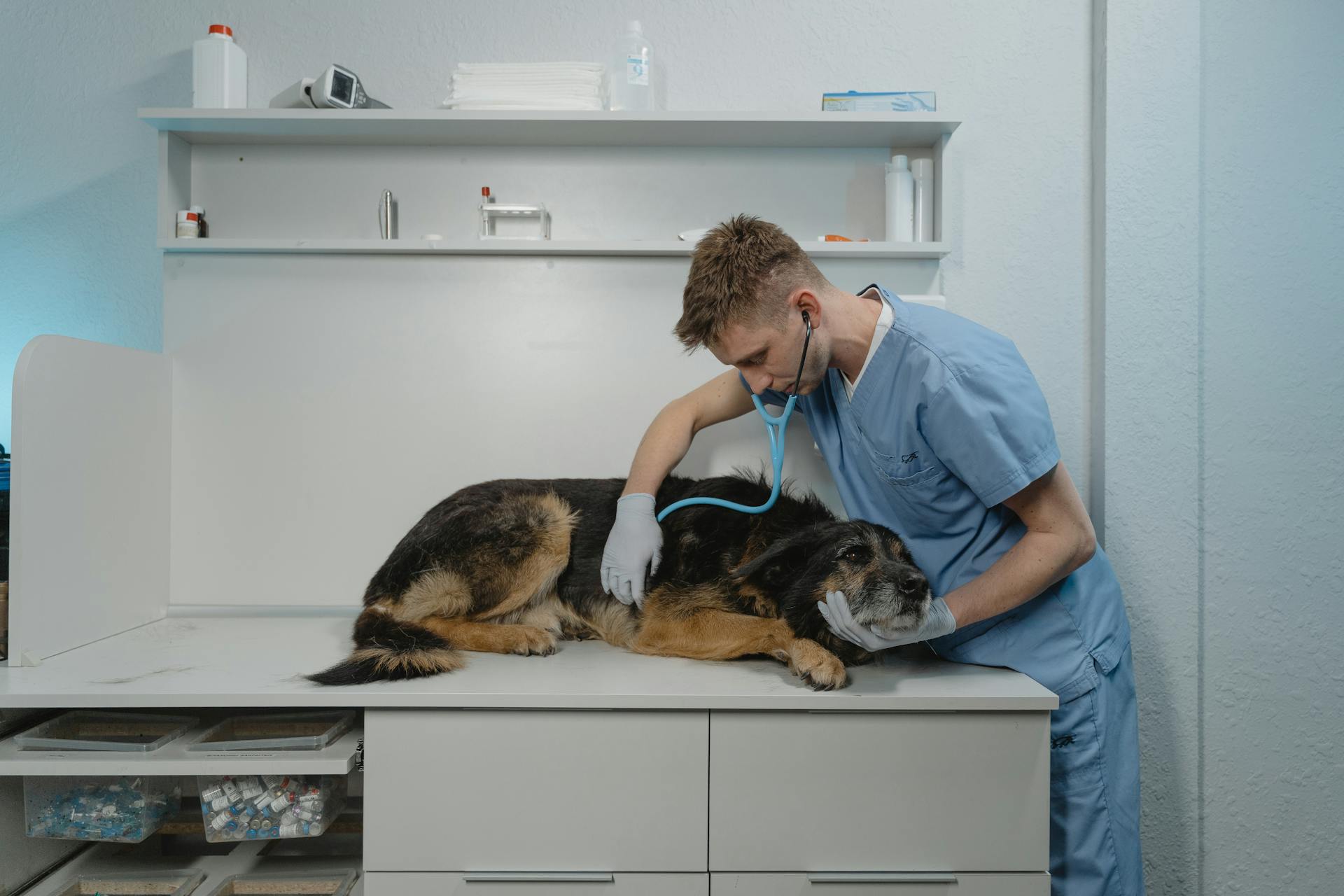
Ehrlichia canis is a tick-borne bacterial disease that affects canines. It's a serious health concern for dogs, especially those that spend time outdoors.
The bacteria are transmitted through the bite of an infected tick, typically the brown dog tick. This tick is found worldwide and is a common parasite in many parts of the world.
Symptoms of Ehrlichia canis can vary in severity and may include fever, lethargy, loss of appetite, and swollen lymph nodes. In severe cases, the disease can lead to kidney failure and death.
If you suspect your dog has been bitten by an infected tick, it's essential to seek veterinary care immediately.
What Is Canine Ehrlichiosis?
Canine ehrlichiosis is a severe and sometimes fatal disease of domestic and wild dogs and foxes. It's caused by a blood-borne bacteria, Ehrlichia canis.
If left untreated, infected dogs may become acutely sick and need a prolonged course of antibiotics to treat the infection. Most dogs will recover, but a proportion of these animals will remain infected, carrying the E. canis bacteria in their spleen and bone marrow indefinitely.
Canine ehrlichiosis occurs worldwide and is a tickborne disease, spread by the brown dog tick in Australia. Extremely rare instances of human infection have occurred overseas but have never been reported in Australia.
In Australia, canine ehrlichiosis is a notifiable disease in NSW under the Biosecurity Act 2015. This means that there is a biosecurity duty to notify authorities if you know or suspect that a dog has this disease.
Causes and Effects
Ehrlichia canis is a sneaky bacterium that has some unique features that help it evade the host's immune system. It lacks peptidoglycans and lipopolysaccharides in its cell walls, making it harder for the host's antibodies to recognize and attack it.
The lack of these cell wall components also makes E. canis cells more dynamic and flexible, allowing them to move around and avoid detection. This flexibility is a key factor in the bacterium's ability to resist the host's immune response.
E. canis penetrates the host's monocytes and macrophages, where it can remain for months without causing any noticeable symptoms.
Pathogenesis
Ehrlichia canis is a sneaky bacterium that's able to evade the immune system of its host.
It's small in size, measuring smaller than other Ehrlichia species, and has a single circular chromosome.
The cell walls of E. canis lack peptidoglycans and lipopolysaccharides, which are common in most Gram-negative bacteria.
This lack of cell wall components makes the E. canis cells' exterior dynamic, allowing them to avoid antibodies in the host's body.
E. canis penetrates the monocytes and macrophages of its hosts, which can lead to infection.
Infection with E. canis can leave a host asymptomatic for months, or severe clinical signs may develop as ehrlichiosis progresses.
Cell Structure and Metabolism
E. canis is an aerobic organism that can't use glucose or fructose as a carbon or energy source. Instead, it relies on amino acids for energy and carbon.
It's unique in that it lacks peptidoglycan and lipopolysaccharides, two common components of bacterial cell walls. This makes it harder for the immune system to recognize it.
As a result, E. canis has developed a complex cell wall structure made up of around 310 proteins with transmembrane helices. This helps it maintain structural stability.
Cholesterol from the host is also incorporated into the outer cell membrane to compensate for the lack of peptidoglycans.
The enzymes needed for the tricarboxylic acid pathway are present in E. canis, allowing it to break down amino acids for energy.
Diagnosis and Treatment
Diagnosis of Ehrlichia canis typically involves a combination of clinical signs and laboratory tests. These signs may include fever, lethargy, weight loss, lymphadenopathy, and discharge from the nose and eyes.
A low packed cell volume in the blood is a common indicator of the presence of E. canis. A blood smear can be done to determine if morulae are present in leukocytes to definitively diagnose the infection.
The presence of antibodies to E. canis in blood can be used to effectively diagnose a patient. These antibodies typically appear within seven days after infection.
Consider reading: Signs Dog Dying Hemangiosarcoma
Diagnosis can be challenging in the early stages of the disease, as dogs may test negative for the condition. This is because the immune system takes 2 to 3 weeks to respond to the presence of the organism and for antibodies to develop.
If anemia is spotted in the blood, this is a good indication that ehrlichiosis is the problem. This can include low red blood cell counts, high levels of globulin protein, or a low platelet count.
Treatment of Ehrlichia canis typically involves a 4-week round of antibiotics such as doxycycline. This is usually prescribed by a veterinarian based on the dog's clinical state and blood parameters.
In severe cases, a blood transfusion may be necessary along with treatment for the disease.
Consider reading: Blood Sugar Levels for Dogs with Diabetes
Stages and Symptoms
Ehrlichia canis, a tick-borne disease, has three distinct stages: early disease, sub-clinical, and clinical or chronic. These stages are crucial in understanding the progression of the disease in dogs.
On a similar theme: Canine Degenerative Myelopathy Stages
The acute stage of ehrlichiosis can last 2 to 4 weeks, during which the infection is either eliminated or the dog will progress to the sub-clinical phase. Symptoms of the acute stage include swollen lymph nodes, weight loss, respiratory distress, bleeding disorders, fever, and neurological disturbances.
Symptoms of the acute stage can be severe and require immediate attention from a veterinarian. If left untreated, the disease can progress to the sub-clinical phase, where there may be no outward appearance of disease.
The clinical phase of ehrlichiosis is a serious stage that can lead to several symptoms, including lameness, swollen limbs, neurological problems, bleeding episodes, anemia, and eye problems.
Here are the key symptoms of ehrlichiosis in dogs, grouped by stage:
- Acute stage: swollen lymph nodes, weight loss, respiratory distress, bleeding disorders, fever, neurological disturbances
- Clinical phase: lameness, swollen limbs, neurological problems, bleeding episodes, anemia, eye problems
Understanding the stages and symptoms of ehrlichiosis is essential in providing prompt and effective treatment for dogs infected with Ehrlichia canis.
Prevention and Management
Preventing Ehrlichia canis in dogs is crucial to keep them safe from this tick-borne disease. Topical tick preventives like Frontline Plus or Advantix can help ensure there are no ticks in your dog's environment. Ask your vet for recommendations on the right tick prevention medications for your pooch.
Using oral chewable options like Nexgard is another effective way to prevent ticks. However, it's essential to note that there is no vaccine available for Ehrlichia canis.
To control ticks on dogs, you may need to use a combination of products that your vet can recommend. If your dog has originated from or travelled through an Ehrlichia canis endemic area, ongoing tick control is crucial.
Monitoring your dog for clinical signs and seeking prompt veterinary attention for diagnosis and treatment of Ehrlichia canis is also vital. If your dog has ever tested positive for Ehrlichia canis, even if it is currently well, you should closely monitor it for clinical signs.
Here are some steps to take to prevent and manage Ehrlichia canis:
- Use tick control products as recommended by your vet.
- Monitor your dog for clinical signs and seek veterinary attention promptly.
- If your dog has a history of Ehrlichia canis, continue tick control and monitoring.
Frequently Asked Questions
What is the survival rate for ehrlichiosis in dogs?
For dogs with ehrlichiosis, a 95% cure rate has been reported after receiving appropriate treatment. Most dogs show significant improvement within 24-48 hours of starting antimicrobial therapy.
What if my dog tests positive for Ehrlichia?
If your dog tests positive for Ehrlichia, we recommend starting 30 days of doxycycline treatment, along with pain relief as needed, to help alleviate symptoms
Sources
- https://en.wikipedia.org/wiki/Ehrlichia_canis
- https://microbewiki.kenyon.edu/index.php/Ehrlichia_canis
- https://www.merckvetmanual.com/dog-owners/disorders-affecting-multiple-body-systems-of-dogs/ehrlichiosis-and-related-infections-in-dogs
- https://www.vscot.com/site/blog/2021/07/15/ehrlichiosis-in-dogs-treatment
- https://www.dpi.nsw.gov.au/biosecurity/animal/humans/ehrlichia-canis
Featured Images: pexels.com


